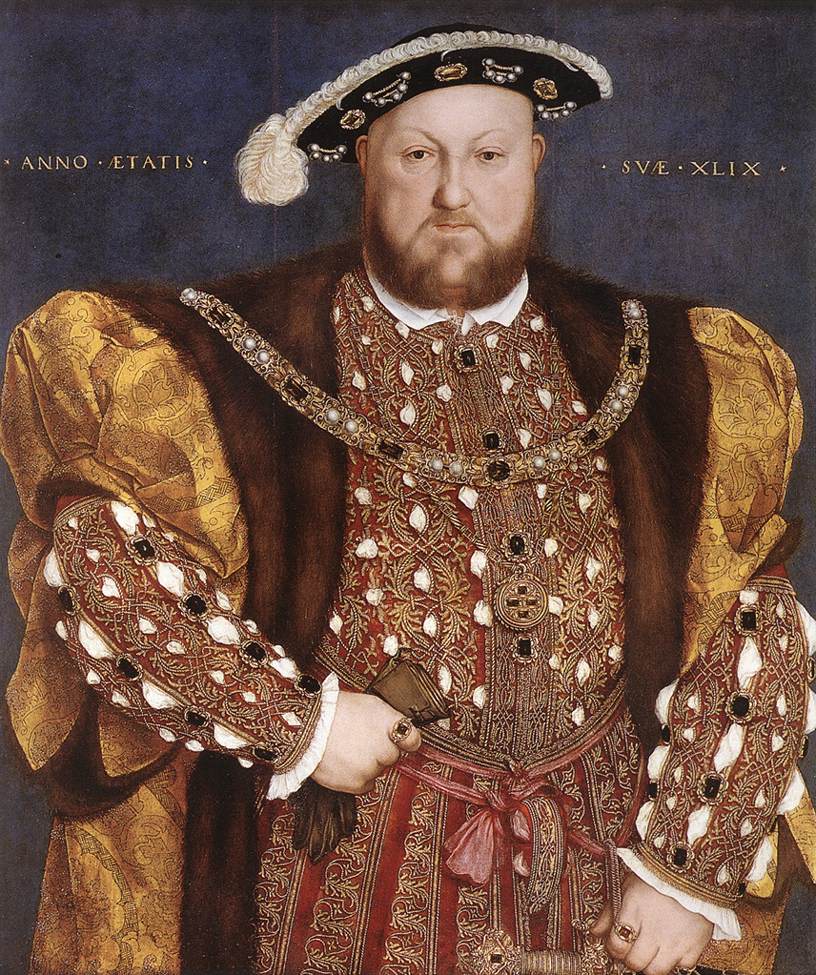 |
| Hans Holbein, Henry VIII, 1537 |
Beautiful Paintings of Terrible People
By LIBBY ROHR
By LIBBY ROHR
It’s fair to say as paintings of Kings go, there are few more blatantly flattering than this famous portrait of King Henry VIII. Hans Holbein the Younger, a painter from a long line of German artists, is most famous for his etchings and portraits of royal dignitaries, especially those of this unsavory ruler and achieved great acclaim for this portraits and ones like it. But how did a German portrait painter end up as the favored artist of one of England’s most infamous kings? It seems a strange choice for such an independent and nationalistic king. Famous for destroying culture and community in his country, cutting England off from the Catholic church, and being so obsessed with having a male heir he went through wives as fast as I go through pairs of cheap earbuds, Henry VIII is far from esteemed as far as British royalty goes.
For a king as endlessly selfish and insecure as Henry VIII, Hans Holbein blatantly plays into his arrogance and entitlement in this work. In the full portrait, Henry stands tall and immovable, with his wide shoulders and a puffed out chest like Superman, covered in jewels and rich fabrics, with sleeves fluffier than fourth of July marshmallows and a determined expression somehow coinciding with his incredibly beady eyes. Holbein was a genius in the kiss-up category, somehow managing to convey an exact physical likeness in a way that turns a pompous spoiled ruler with the maturity of a child into a noble, yet bullish commander, worthy of respect and leadership. The height of this visual adulation comes at Henry’s waist. His left hand holds a glove in a ringed hand, propped up on his belt, leading down to a rather large and visible codpiece. His other hand highlights the bottom of said piece. Everything from the red color to his stance emphasizes Henry’s (desired) superior virility, despite his famous inability to produce a male heir. This part of the painting is straight nonsense for Henry’s benefit. What's made all the better is that this painting was done when Henry was in his forties, as part of a midlife crisis of sorts. The whole things is absolutely laughable.
And yet it worked. In several accounts by onlookers of this portrait, placed in full view in his grand palace, it was astounding and intimidating to behold. Henry certainly got some bang for his buck with this piece. When you look at this magnificent portrait, it’s easy to forget about his temper tantrum that got him excommunicated by the church. It’s seems like one might be momentarily able to forget the roughly 72,000 people he executed on a brutal whim. One might be able to overlook the absolute dismemberment of the monasteries and cultural organizations that defined the day to day organization of English life. Looking on this magnificent portrait, one does not see Henry the wild narcissist. Instead, he’s replaced with the Henry he wanted to be but never was, triumphant and deserving. This alone shows the power and purpose of court painting, to promote. While people like Caravaggio lead us to think about the complex ethics and humanity of people we see as gods, the remaining paintings in this series will do the opposite. We will see human beings, desperately clawing for legendary and even holy status, like Henry here, who declared himself supreme leader of the English church.
It’s paintings like these that make us think of the point of view of the artist and encourage us to question the information we’re given. Above all else, this painting of Henry VIII shows just how impressive good propaganda can be.

